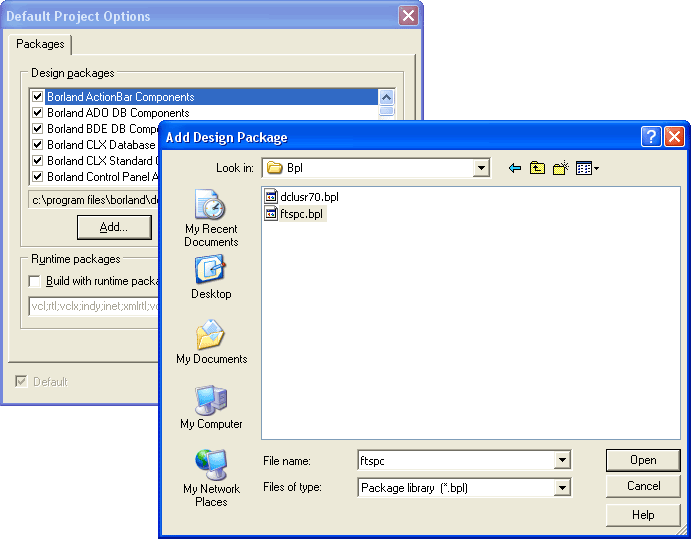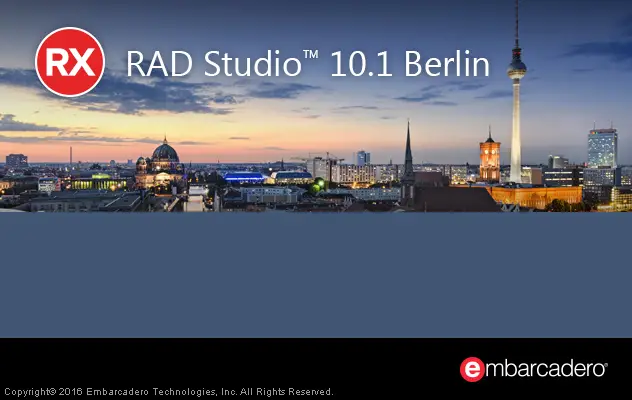Delphi Version Numbers
- Delphi 10.1 Berlin Version Number. Tags: Delphi 10.1 berlin, version number. Delphi 10.1 Berlin Version Number. April 27, 2016 No Comments delphi, news. Embarcadero has just released Delphi 10.1 Berlin on 20/April/2016. RX delphi10.berlin installation.
- The CompilerVersion constant identifies the internal version number of the Delphi compiler. It is defined in the System unit and may be referenced either in code just as any other constant.
The first three numbers of the version reflect the branch for/from which the build was executed and the last is the last change number in the code repository. Only the release branches had actual release numbers for the version.

This document provides concise descriptions of Delphi versions and its history, along with a brief list of features and notes. Find out how Delphi evolved from Pascal to a RAD tool that can help you solve complex development problems to deliver high-performance, highly scalable applications ranging from desktop and database applications to mobile and distributed applications for the Internet not only for Windows but also for Linux and the .NET.
What is Delphi?
Delphi is a high-level, compiled, strongly typed language that supports structured and object-oriented design. Delphi language is based on Object Pascal. Today, Delphi is much more than simply 'Object Pascal language'.
The roots: Pascal and its history
The origin of Pascal owes much of its design to Algol - the first high-level language with a readable, structured, and systematically defined syntax. In the late sixties (196X), several proposals for an evolutionary successor to Algol were developed. The most successful one was Pascal, defined by Prof. Niklaus Wirth. Wirth published the original definition of Pascal in 1971. It was implemented in 1973 with some modifications. Many of the features of Pascal came from earlier languages. The case statement, and value-result parameter passing came from Algol, and the records structures were similar to Cobol and PL 1. Besides cleaning up or leaving out some of Algol's more obscure features, Pascal added the capability to define new data types out of simpler existing ones. Pascal also supported dynamic data structures; i.e., data structures which can grow and shrink while a program is running. The language was designed to be a teaching tool for students of programming classes.
In 1975, Wirth and Jensen produced the ultimate Pascal reference book 'Pascal User Manual and Report'. Wirth stopped its work on Pascal in 1977 to create a new language, Modula - the successor to Pascal.
Borland Pascal
With the release (November 1983) of Turbo Pascal 1.0, Borland started its journey into the world of development environments and tools. To create Turbo Pascal 1.0 Borland licensed the fast and inexpensive Pascal compiler core, written by Anders Hejlsberg. Turbo Pascal introduced an Integrated Development Environment (IDE) where you could edit the code, run the compiler, see the errors, and jump back to the lines containing those errors. Turbo Pascal compiler has been one of the best-selling series of compilers of all time, and made the language particularly popular on the PC platform.
In 1995 Borland revived its version of Pascal when it introduced the rapid application development environment named Delphi - turning Pascal into a visual programming language. The strategic decision was to make database tools and connectivity a central part of the new Pascal product.
The roots: Delphi
After the release of Turbo Pascal 1, Anders joined the company as an employee and was the architect for all versions of the Turbo Pascal compiler and the first three versions of Delphi. As a chief architect at Borland, Hejlsberg secretly turned Turbo Pascal into an object-oriented application development language, complete with a truly visual environment and superb database-access features: Delphi.
What follows on the next two pages, is a concise description of Delphi versions and its history, along with a brief list of features and notes.
Now, that we know what Delphi is and where are its roots, it's time to take a trip into the past..
Why the name 'Delphi'?
As explained in the Delphi Museum article, project codenamed Delphi hatched in mid 1993. Why Delphi? It was simple: 'If you want to talk to [the] Oracle, go to Delphi'. When it came time to pick a retail product name, after an article in Windows Tech Journal about a product that will change the life of programmers, the proposed (final) name was AppBuilder. Since Novell released its Visual AppBuilder, the guys at Borland needed to pick another name; it became a bit of a comedy: the harder people tried to dismiss 'Delphi' for the product name, the more it gained support. Once touted as the 'VB killer' Delphi has remained a cornerstone product for Borland.
Note: some of the links below marked with an asterix (*), using the Internet Archive WayBackMachine, will take you several years in the past, showing how Delphi site looked long-ago.
The rest of the links will point you to a more in-depth look at what each (new) technology is about, with tutorials and articles.
Delphi 1 (1995)
Delphi, Borland's powerful Windows programming development tool first appeared in 1995. Delphi 1 extended the Borland Pascal language by providing object-orientated and form-based approach, extremely fast native code compiler, visual two-way tools and great database support, close integration with Windows and the component technology.
Here's the Visual Component Library First Draft
Delphi 1* slogan:
Delphi and Delphi Client/Server are the only development tools that provide the Rapid Application Development (RAD) benefits of visual component-based design, the power of an optimizing native code compiler and a scalable client/server solution.
Heres what were the '7 Top Reasons to Buy Borland Delphi 1.0 Client/Server*'
Delphi 2 (1996)
Delphi 2* is the only Rapid Application Development tool that combines the performance of the world's fastest optimizing 32-bit native-code compiler, the productivity of visual component-based design, and the flexibility of scalable database architecture in a robust object-oriented environment.
Delphi 2, beside being developed for the Win32 platform (full Windows 95 support and integration), brought improved database grid, OLE automation and variant data type support, the long string data type and Visual Form Inheritance. Delphi 2: 'the Ease of VB with the Power of C++'
Delphi 3 (1997)
The most comprehensive set of visual, high-performance, client and server development tools for creating distributed enterprise and Web-enabled applications.
Delphi 3* introduced new features and enhancements in the following areas: the code insight technology, DLL debugging, component templates, the DecisionCube and TeeChart components, the WebBroker technology, ActiveForms, component packages, and integration with COM through interfaces.
Delphi 4 (1998)
Delphi 4* is a comprehensive set of professional and client/server development tools for building high productivity solutions for distributed computing. Delphi provides Java interoperability, high performance database drivers, CORBA development, and Microsoft BackOffice support. You've never had a more productive way to customize, manage, visualize and update data. With Delphi, you deliver robust applications to production, on time and on budget.
Delphi 4 introduced docking, anchoring and constraining components. New features included the AppBrowser, dynamic arrays, method overloading, Windows 98 support, improved OLE and COM support as well as extended database support.
Delphi 5 (1999)
High-productivity development for the Internet
Delphi 5* introduced many new features and enhancements. Some, among many others, are: various desktop layouts, the concept of frames, parallel development, translation capabilities, enhanced integrated debugger, new Internet capabilities (XML), more database power (ADO support), etc.
Then, in 2000, Delphi 6 was the first tool to fully supports new and emerging Web Services ..
What follows is a concise description of most recent Delphi versions, along with a brief list of features and notes.
Delphi 6 (2000)
Borland Delphi is the first rapid application development environment for Windows that fully supports new and emerging Web Services. With Delphi, corporate or individual developers can create next-generation e-business applications quickly and easily.
Delphi 6 introduced new features and enhancements in the following areas: IDE, Internet, XML, Compiler, COM/Active X, Database support..
Whats more, Delphi 6 added the support for cross-platform development thus enabling the same code to be compiled with Delphi (under Windows) and Kylix (under Linux). More enhancements included: support for Web Services, the DBExpress engine, new components and classes..
Delphi 7 (2001)
Borland Delphi 7 Studio provides the migration path to Microsoft .NET that developers have been waiting for. With Delphi, the choices are always yours: you're in control of a complete e-business development studio with the freedom to easily take your solutions cross-platform to Linux.
Delphi 8
For the 8th anniversary of Delphi, Borland prepared the most significant Delphi release: Delphi 8 continues to provide Visual Component Library (VCL) and Component Library for Cross-platform (CLX) development for Win32 (and Linux) as well as new features and continued framework, compiler, IDE, and design time enhancements.
Delphi 2005 (part of Borland Developer Studio 2005)
Diamondback is the code name of the next Delphi release. The new Delphi IDE supports multiple personalities. It supports Delphi for Win 32, Delphi for .NET and C#..
Delphi 2006 (part of Borland Developer Studio 2006)
BDS 2006 (code named 'DeXter') includes complete RAD support for C++ and C# in addition to Delphi for Win32 and Delphi for .NET programming languages.
Turbo Delphi - for Win32 and .Net development
Turbo Delphi line of products is a subset of the BDS 2006.
CodeGear Delphi 2007
Delphi 2007 released in March 2007. Delphi 2007 for Win32 is primarily targeted at Win32 developers wanting to upgrade their existing projects to include full Vista support - themed applications and VCL support for glassing, file dialogs, and Task Dialog components.
Embarcadero Delphi 2009
Embarcadero Delphi 2009. Support for .Net dropped. Delphi 2009 has unicode support, new language features like Generics and Anonymous methods, the Ribbon controls, DataSnap 2009..
Embarcadero Delphi 2010
Embarcadero Delphi 2010 released in 2009. Delphi 2010 allows you to create touch based user interfaces for tablet, touchpad and kiosk applications.
Embarcadero Delphi XE
Embarcadero Delphi XE released in 2010. Delphi 2011, brings many new features and improvements: Built-in Source Code Management, Built-in Cloud Development (Windows Azure, Amazon EC2), Innovative expanded Tool Chest for optimized development, DataSnap Multi-tier Development, much more..
Embarcadero Delphi XE 2
Embarcadero Delphi XE 2 released in 2011. Delphi XE2 will allow you to: Build 64-bit Delphi applications, Use the same source code to target Windows and OS X, Create GPU-powered FireMonkey (HD and 3D business) application, Extend multi-tier DataSnap applications with new mobile and cloud connectivity in RAD Cloud, Use VCL styles to modernize the look of your applications..

In Delphi 2010, if I want to do this:
What version # do I need to use in place of '999'?
5 Answers
Here's the list of compiler versions:
In Delphi 2007, VER180 and VER185 are both defined. This was for backward compatibility with Delphi 2006, and to make sure you could also detect D2007 specifically.
I'm not sure why they did that between '06 and '07, but not for other releases. Seems inconsistent to me (but it isn't - see Barry Kelly's comment below).
If you're working with Delphi 6 and later, you can use CompilerVersion:
Along the same lines as Jason's comment if you are creating code that needs to run in current and older versions of Delphi you might want to do something like:
protected by Community♦May 8 '11 at 17:04
Thank you for your interest in this question. Because it has attracted low-quality or spam answers that had to be removed, posting an answer now requires 10 reputation on this site (the association bonus does not count).
Would you like to answer one of these unanswered questions instead?
